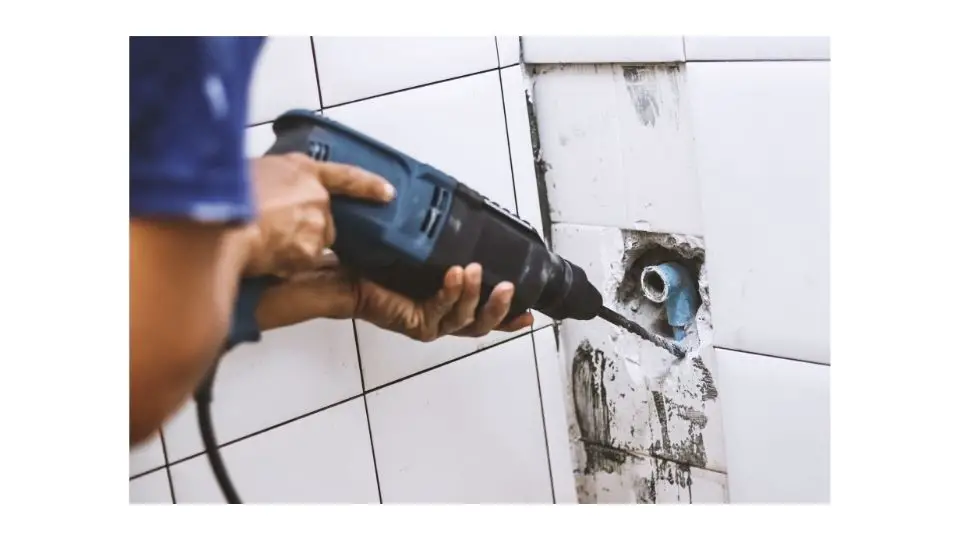Does a Toilet need a vent? this post answers that. Yes, Toilets need a vent pipe as well as a vent connected to the roof. The main purpose of these vents is to allow sewer gas (a byproduct of water flowing through the pipes) to escape from the home. If no vent pipe or connection is installed, you can be subject to foul odors and sewage backing up in your house, which could pose a serious health hazard.
Toilets that don’t have a vent connected to the toilet can also have problems when the toilet is flushed. If a person were to sit on or be near the toilet, their body heat could accelerate the deterioration of the rubber seal. This can cause sewage gases to seep into your home and possibly create a hazardous environment that is not only unsanitary but also unsafe.
What is the purpose of a toilet vent?
The purpose of the vent is to allow sewer gases, or gases produced by the decomposition of organic matter in septic tanks and drain fields, to escape from your home.
An open vent pipe allows air to come into contact with the sewer gases, creating a change in temperature that converts them into non-toxic water vapor. This prevents harmful (and potentially deadly) gases from accumulating inside your home.
These gases can be dangerous if they build up in your home because they can be toxic to humans. Despite their delicate nature, the gases are often deadly, as they are comprised of methane, carbon dioxide, oxygen, and nitrogen. The vent pipe serves another purpose as well: it allows water that is used for flushing to flow through the toilet tank instead of being discharged into the sewer system.
What happens if a toilet is not vented?
If a toilet is not vented it will be very difficult to keep it germ-free. Without a vent, the water in the toilet tank will continue to run until it flows out of the toilet and into your home’s sewage system.
The bacteria that are already present in your toilet tank will continue to be able to breed and multiply in this flowing water, creating a breeding ground for harmful bacteria (like E. coli) and possibly even harming you if you eat something that was washed with contaminated water. We also give special consideration to homes where there is a septic system.
Wastewater will have a hard time moving through your pipes if they are not vented, If there is no vent connected to your toilet, water will continue to flow from the tank into the bowl and down the drain. The wastewater will have a hard time moving through your pipes if they are not vented.
How do you vent a toilet without a vent?
There are many other ways to vent a toilet without a vent pipe.
- You can make the water in the tank flow into an overflow basin or sink instead of down your drain. This will be more effective, and also safer than emptying the tank into a toilet bowl or flushing it with water from another source.
- You can build a venting chimney for your toilet. You will have to take the lid off the top of your tank to see how far down you need the chimney to go. The length that you have to go will depend on how tall your room is, and it is important that no part of the chimney sticks out from under the top of your tank so that no small children, pets or other people fall into it. A short venting chimney will keep the water from entering your home’s sewage system.
- You can use a vent pipe made of PVC or metal that has been drilled out of the floor under your toilet. These types of pipes are more expensive and not as effective as those made out of plastic or metal, but they can work.
- You can build a trap door in your toilet’s tank and allow the water to flow out of it into a jar placed above the tank. This is easy to construct, but for small tanks, a more effective method is to install an external trap door that will allow the water to flow out of the tank.
- You can build a vent pipe into the toilet bowl itself. The only thing that you have to be careful about here is to make sure that it will not block off any of the holes in your toilet bowl and that it will not interfere with the mechanical workings of your toilet. Herrmann says, “Some people have asked me how I keep their toilets flushed all day long. My answer is first, that you should draw up a diagram of the toilet bowl and then make the pipes to do what you want. Second, if you install them well, they will never interfere with anything.”
- If your toilet has a water system to flush in the tank itself, you can build a vent pipe into that system too.
Do all toilets need a vent pipe?
Yes, all toilets need a vent pipe. What it does is allow air to enter the toilet tank so that the water level in the tank can rise when you flush the toilet. It is not absolutely necessary, but if you are going to build toilet facilities in your house or apartment, it is highly recommended that you add this feature to your “toilet”.

Arthur C. Jackson is the resident handyman and toilet expert for BestToiletGuides.com. Drawing from his experience, he tends to focus on how he can help the consumer.

